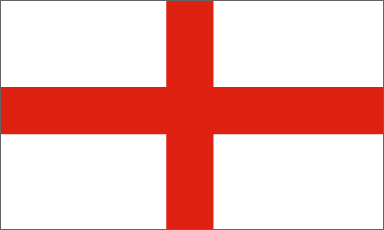Most games are underway. Eddy Levi has just arrived, so it must be about 10 minutes into the round, and we are just waiting for Gary Bekker and Alex Kaplan to make up a full complement. On a point of law, I have had to remind a player that writing moves down before they are played is against the rules.

Beranjia (left) vs Zoraja (right)
1 Hour into the games
Early news from the top boards. Board 1 is a Sicilian Kan with Domagoj having double pawns on the a-file but some piece activity for this. David Garner has pushed forward int he centre against Rujevic's Closed Sicilian. Dowling and Beaumont have both castled long in a Reti, a game that looks set for the night. Shane Lawson doesn't find himself in the backroom often, and is making the most of it, taking on Malcolm Pyke's French with the Wing Gambit, b4. Eddy Levi is doing his utmost to liven up a typically stodgy Peter Fry Caro Kann.
First game of the night to finish is Rad Chmiel winning against Ben Frayle, a one move blunder by all accounts.
Paul Cavezza has Richard Voon tutting and shaking his head. Cavezza prepared a line against Voon's Najdorf, and Richard has played into it. Further down, Felix Wyss is a pawn to the good against Roger McCart, Endre Simon is a piece to the good against Damien Feaine, Michael Hain is 2 pawns to the good against James Brennan, and Ganesh Krishnan is a piece down against Stephen Jago, but Stephen has some defending to do.
Positions to follow soon:
This mad position is the board 13 game between Marcus Ogden and Richard McCart. I prefer white, but that d5 knight looks good.
On board 2 Mirko as white to play here is facing a Maroczy Bind against the white pieces. David garner seems pretty happy at the moment.
On board 1, James Morris does not seem happy. He has just gone a pawn down against Domagoj Dragicevic and is in deep thought trying to work out how to compensate for this deficit.
Wonderboy Karl Zelesco doesn't even give me a chance to have a decent look at his game before he has won! The opening to the Krishnan-Jago game was interesting
Into the second hour:
Puccini-Beattie is a difficult endgame. Opposite coloured bishops means a draw doesn't it? Both players look as if they are trying to win!
James Morris as white, is under immense pressure from Dragicevic here.
Kevin Brown must be happy with 2 bishops, and a pawn, but Alex Kaplan is fighting on.
Across the boards, Rujevic is under great pressure, and is fighting doggedly. Beaumont has a shot pawn structure so is trying to make something happen against Dowling. Malcolm Pyke has retained his pawn advantage, but is under some pressure from a frontal attack with his king in the centre. Paul Cavezza is a piece up against Richard Voon, but only has 15 minutes for the game, while the Kovacevic-Hain game is an interesting struggle of opposite side attacks with both having castled king side!
Stop Press!!
*** James Morris has made chances for himself exchanging his queen for 2 rooks and some pawns, but he has an advanced central passed pawn that is going to give Domagoj some headaches. Added to this, Domagoj has less than 10 minutes.
*** Paul Cavezza has an exchange and a pawn lead against Richard Voon and possibly has Richard in a maitng net. But he has only 5 minutes to finish Richard off!
*** Kaplan has fought well and has exchanged all but 2 pawns of Kevin Brown. The game is still probably winning for the bishop pair, but with every pawn exchange, the win looks harder.
Board 1 has simplified to this position. Domagoj as black played 1..Qf3 which forced Morris into a fit of tutting and head shaking. But the young master is not leading the tournament for nothing, gritted his teeth and fights on with, 2.Rhe8 Kf5 3.Ra2, leaving Domagoj with some issues and only 6 minutes left to sort the game out.
A big crowd is surrounding board 1 as Domagoj is down to the last minute. The tension is amazing! Right behind them, Mirko is also struggling....could it be a night where both our IM's lose? Eddy Levi finally breaks through against Peter Fry, and Alex Kaplan fought bravely to hold that difficult endgame to a draw! Paul Cavezza had a great result, with a win against Richard Voon. He still got into some time trouble but never dropped below 5 minutes, perhaps learning from the last few weeks.
The Final Dash:
Mirko Rujevic has won! In a difficult position he worked out the tactics better than his opponent, as David Garner's time started to run short. James Morris is putting up a terrific fight on the top board and has reduced the position to R+R+P v Q+2P, and Domagoj is still down to a minute. Malcolm Pyke has just won, though there were some scares along the way. And in the other room, the only 2 games left involve the father and son Hain team, and it looks as if they are both doing well!
Morris-Dragicevic draw! According to James, the game was "full of errors....by both sides". At the other end of the table, it's good to see Michael Hain score his first win on his return to chess after a 20+ years absence. Malcolm Pyke admits that he was a bit lucky in his game against Shane Lawson, but was very happy with the move 29..a5. Only 3 games remain. David Beaumont is fighting in a worse position against John Dowling, Gary Bekker has played above his weight again, and is holding Kerry Stead, whileAnthony hain looks to be taking another scalp in Paul Kovacevic.































